18.05.2021
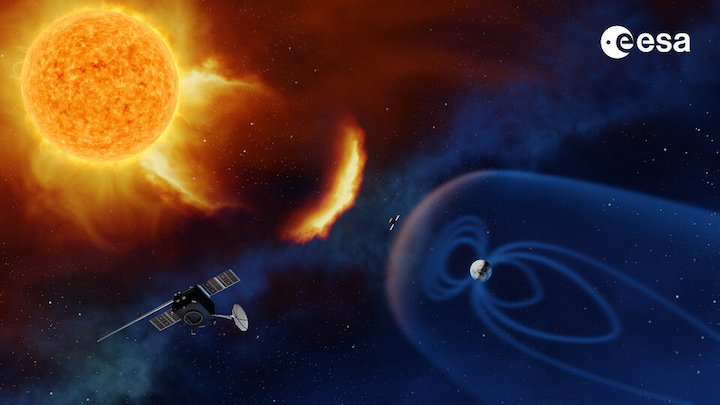
ESA needs you. We need a name for our new spacecraft. Its mission? To spot potentially hazardous solar storms before they reach Earth.

The new space weather mission will keep constant watch over our unpredictable and often unruly star, sending back a steady stream of data to ESA’s Space Weather Service Network.
The spacecraft, currently known as "Lagrange", will be the first of its kind. Flying to a unique position in space, fixed in relation to the Sun and Earth, it will have a ‘side view’ of our star.
From here, it will see sources of dangerous solar activity – like sun spots – before they rotate into view from Earth, as well as follow the propagation of solar events as they travel toward Earth.
The mission’s data will be used to make timely warnings available to national authorities, industries and organisations who rely on or look after the modern technological systems on which we all depend and which are at risk from the Sun’s outbursts.
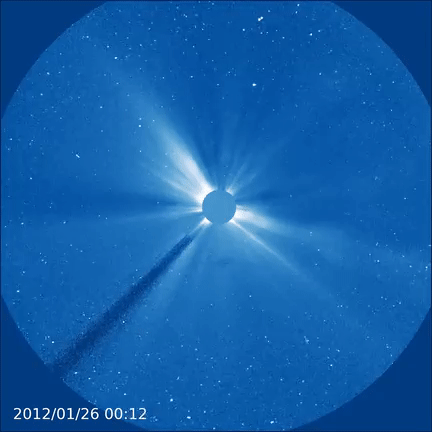
This mission will make us safer and help protect crucial civil infrastructure – like power grids and navigation and telecommunication satellites – but we haven’t got a proper name for it (yet)!
ESA invites you to send us your best and liveliest proposed mission names. Submissions can be sent from now until 17 October, and the selected entry will win a nifty prize. We can’t wait to hear from you!
Read the rules in full and submit your entry here.
Space weather
The Sun frequently ‘burps’, ejecting billions of tonnes of hot plasma into space in colossal blobs of matter threaded with magnetic fields that are dubbed ‘coronal mass ejections’.
It also emits gigantic flares, bursts of powerful electromagnetic radiation – x-rays, gamma rays and radio bursts – accompanied by streams of highly energetic particles.

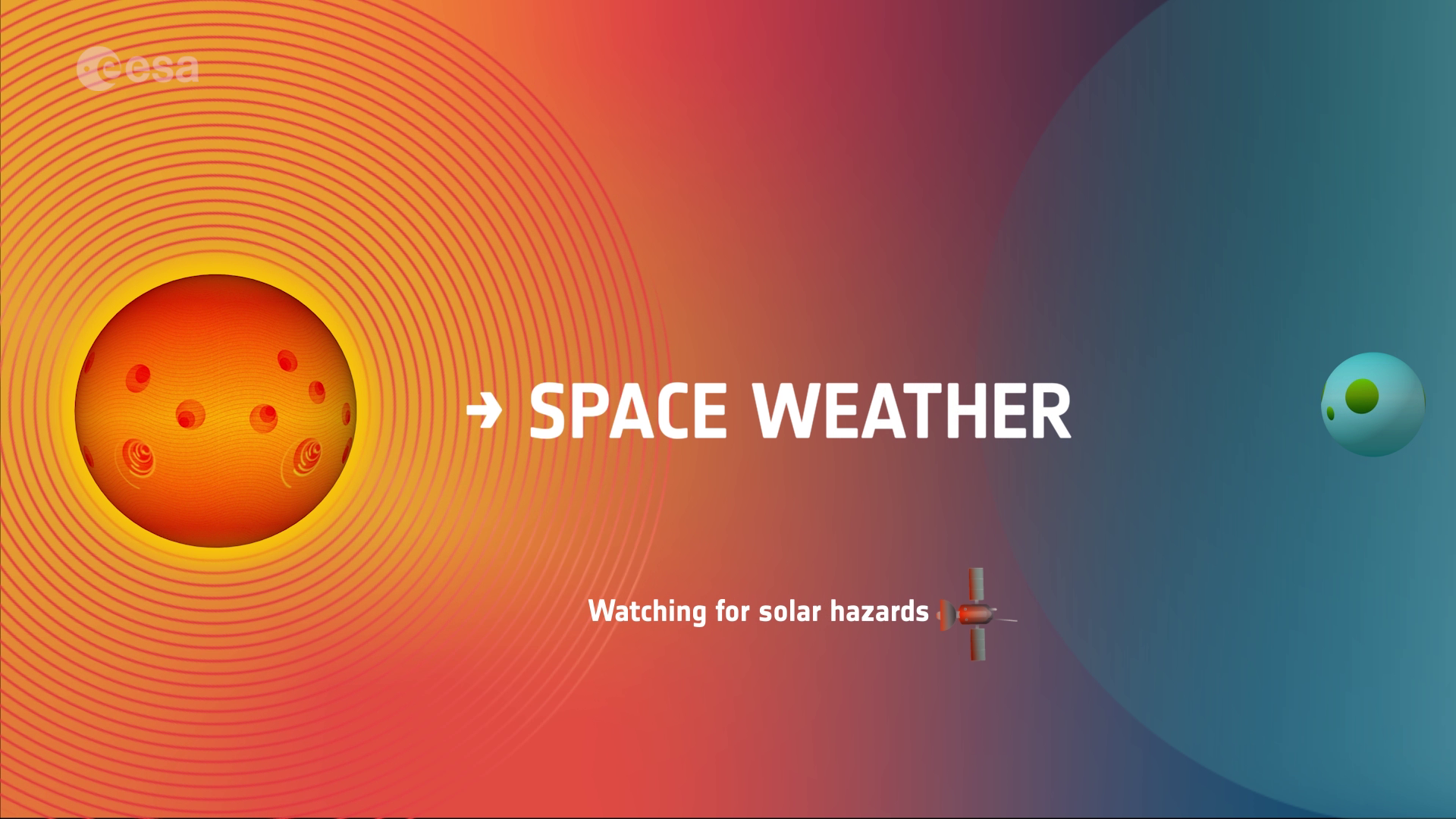
Access the video
These violent ‘solar sneezes’ sometimes spin outward from the Sun heading in our direction, delivering enormous amounts of radiation, energy and charged particles that significantly distort and disrupt Earth’s protective magnetic field and upper atmosphere, and pose a radiation risk to astronauts.
More significantly, disruption to our magnetic field creates geomagnetic storms that can affect satellites in orbit, navigation systems, terrestrial power grids and data and communication networks, to name just a few.
Advance warning of Earth impacts
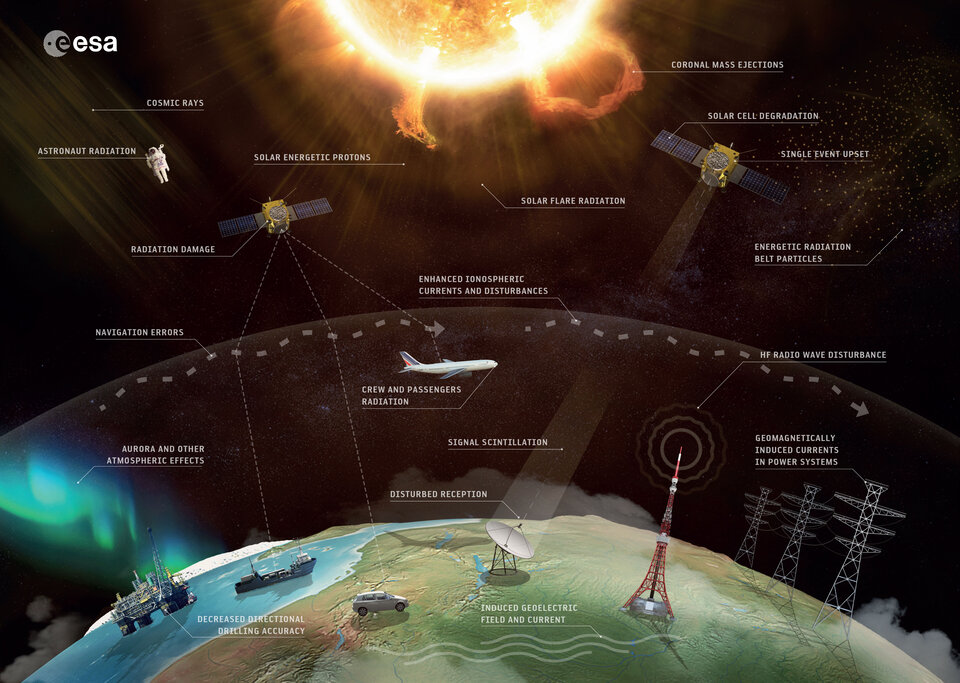
Harmful ‘space weather’ has affected Earth before, but as we become increasingly reliant on systems and technologies vulnerable to the Sun’s outbursts, future solar impacts could be even more disruptive.
Early warning of such events can make a real difference, giving civil authorities crucial time to prepare and protect our vital infrastructure on Earth as well as explorers in space.
That’s precisely what our new mission will do as it monitors ‘the side’ of the Sun, getting a view of sunspots – often the sources of potential solar outbursts – before they rotate into view from Earth. During solar events, the mission will also provide a constant stream of vital data for early warning of when solar activity could affect our societies and economies.
Mission soon-to-be formerly known as Lagrange
So far, ESA’s boffins have been referring to it as the “Lagrange mission” to L5 simply because its ultimate orbital parking spot is the fifth Lagrange point – a gravitationally stable location in the same orbit as Earth and about as far from the Sun as we are, at roughly 150 million km (as you may have guessed, there are four other Lagrange points.)
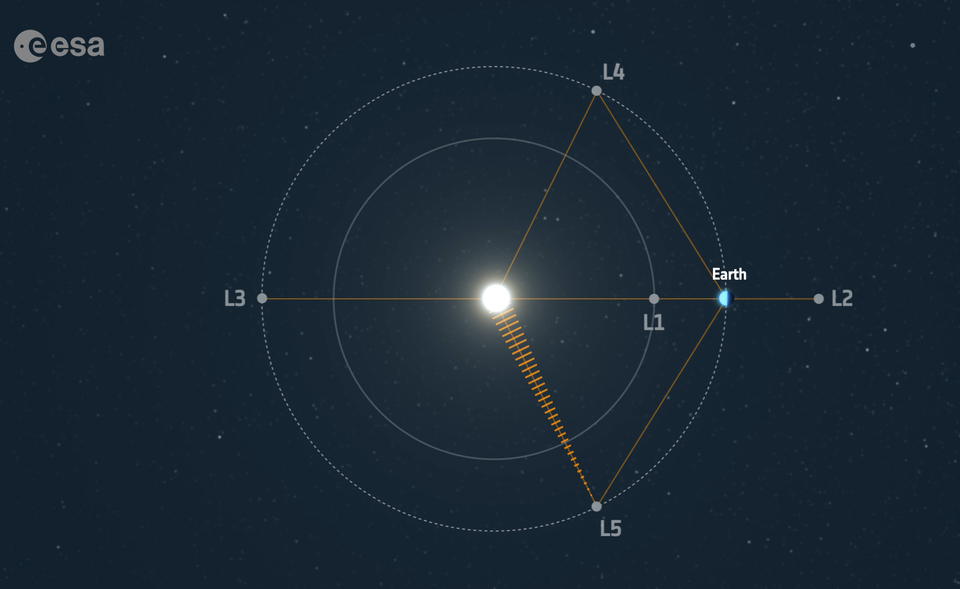
From the L5 position, trailing about 60 degrees behind Earth, this new spacecraft will see a different side of our star – in a way, it will ‘see the future’, as it observes what is coming around the corner.
As an operational, data-delivering mission – in contrast to a purely scientific one – it will support real-time warning as data from the spacecraft are streamed continuously to the ground via the Agency’s deep space antenna network and relayed to ESA’s Space Weather Service Network and its hubs spread across Europe.
Read the rules in full and submit your entry here.
The fine print
Here’s a brief overview of the rules. In short:
- The No-Name Mission contest is open from 17 May 2021 until 17 October 2021 at 12:00 (CEST).
- The contest is open to nationals of ESA Member, Cooperating and Associate States; the European Union; Argentina, Australia; and ISS partner countries (but there are exclusions).
- The contest, including accepting the terms and conditions and privacy notice, is being held in English.
- Only individual submissions will be considered valid.
- The winning name will become the official name of ESA’s new space weather mission.
- No more than one submission per email address.
- If several participants submit the same winning mission name, then the one who submitted it first by filling in the contest form online will be considered the winner.
- The proposed name must reflect the mission’s aims and goals.
- Name must be a maximum of three words, no special symbols.
- The winning name will become the official name of ESA’s space weather mission. The winner will receive a voucher for ESA’s Space Shop.
- The winner will be selected in October 2021 and notified as soon as possible thereafter.
Quelle: ESA
